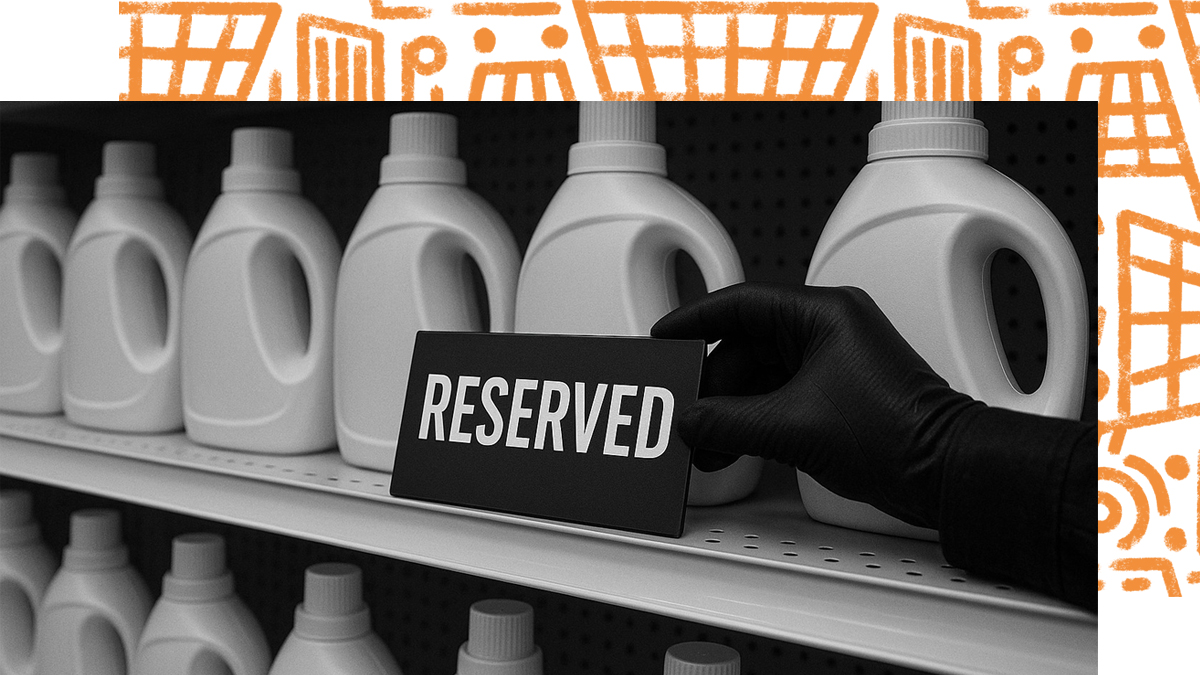
Innovation Without a Business Model is Just a Guess
by Simpactful Senior Partner, Heather Burgess
The consumer-packaged goods industry has no shortage of ideas. Every year, shelves fill with new flavors, forms, and formats. Yet the majority of innovations fail to deliver long-term brand or category growth. Why? One root cause is often overlooked: The absence of a clear, viable business model vision – and the discipline to update it throughout the project.
In the words of Simpactful Senior Consultant and former Procter and Gamble EVP, Martin Hettich, “Too often, innovation projects are launched on a great consumer insight or a bold creative concept – but without a model that ties the initiative to both retailer economics and manufacturer requirements. Without that bridge, innovation can feel exciting in concept but unsustainable in execution.”


Why the Business Model Matters
Innovation isn’t just about the product. It’s about the system that surrounds it – pricing, packaging, trade terms, distribution, merchandising, and portfolio role. A viable business model lays out how the product creates value for consumers, captures value for the manufacturer, and drives category growth for the retailer.
That means the financial model must go beyond topline forecasts. It should explicitly address:
- Incremental Brand Growth – What are the incremental sources of growth – above and beyond what it is replacing on the shelf – including new consumers, distribution, sales, occasions, frequency, and profit?
- Incremental Category Growth – Does this item grow the pie or simply shift share? Retailers have limited shelf space – and innovation must earn its slot by expanding the category.
- Margins – Is this product accretive to the manufacturer and retailer’s profit, or does it dilute? Higher costs in ingredients or packaging must be balanced by pricing power, trade funding, or productivity elsewhere in the portfolio.
- SKU Productivity – Retailers are forced to scrutinize sales per facing, store, and week. Manufacturers and strong manufacturers are disciplined in managing SKU productivity. New items must justify space and inventory – and are often compared against high-performing existing SKUs.
Overcoming the KPI Alignment Problem
When the business model is vague or static, functional teams default to their own metrics. R&D focuses on feasibility, Marketing on brand equity, share growth, or awareness, Sales on sell-in, Supply Chain on cost, and Finance on P&L. Each is important – but if they’re not anchored to a shared vision, functions optimize in silos. The result: An innovation that looks good in a concept test – but stumbles in-market.
The solution is to treat the business model as a living document. As new data emerges – consumer testing, cost updates, and retailer feedback – the model should be updated and re-shared, guiding KPIs across functions. This ensures that as the project evolves, the team stays aligned on what success looks like and what’s required for all stakeholders. Continual updates can also enable candid risk assessments, quality coaching, impactful work sprints based on a common understanding of the critical questions, and ultimately, faster decisions to proceed or to pivot to other projects in the innovation portfolio or contingency options. In a world where resources are scarce and execution is everything, systems that drive better and faster decisions are critical.
Retailer Reality Check
Leaders must consider more than internal company financial success metrics. Retailers today expect more from innovation than simply shifting share between brands. They want proof that an innovation will:
- Expand traffic, trips, or baskets
- Grow the overall category, not just the manufacturer’s brand
- Deliver attractive margins versus category average
- Maintain or improve SKU productivity in a set that is already over-crowded
When the manufacturer’s financial model explicitly addresses these levers, sell-in conversations can shift from a speculative pitch to a category growth story. That’s how retailers make space – and how new products survive the reset cycle.
Solve Simply and Make an Impact
At Simpactful, we’ve seen how aligning business model vision with robust learning plans, agile sprints, and ongoing KPI updates can dramatically improve innovation outcomes. When every function – from Insights and Products Research to Finance to Sales – has clarity on the economic “north star,” execution becomes sharper, trade-offs are made with purpose, and products have a far better chance of becoming a sustained growth driver.
Innovation fails when it is treated as an event. It succeeds when it is managed as a system – with a business model vision that is clear, updated, and aligned at every step.
Struggling with innovation success and need help implementing a comprehensive strategic financial framework for your portfolio and projects? Simpactful can help! Discover how our Simpactful general management, innovation and finance practitioners can leverage our simple frameworks and practical experience to help drive your business forward. Contact us at contact@simpactful.com or 925-234-6394. Visit www.simpactful.com to learn more.
Why the Business Model Matters
Innovation isn’t just about the product. It’s about the system that surrounds it – pricing, packaging, trade terms, distribution, merchandising, and portfolio role. A viable business model lays out how the product creates value for consumers, captures value for the manufacturer, and drives category growth for the retailer.
That means the financial model must go beyond topline forecasts. It should explicitly address:
- Incremental Brand Growth – What are the incremental sources of growth – above and beyond what it is replacing on the shelf – including new consumers, distribution, sales, occasions, frequency, and profit?
- Incremental Category Growth – Does this item grow the pie or simply shift share? Retailers have limited shelf space – and innovation must earn its slot by expanding the category.
- Margins – Is this product accretive to the manufacturer and retailer’s profit, or does it dilute? Higher costs in ingredients or packaging must be balanced by pricing power, trade funding, or productivity elsewhere in the portfolio.
- SKU Productivity – Retailers are forced to scrutinize sales per facing, store, and week. Manufacturers and strong manufacturers are disciplined in managing SKU productivity. New items must justify space and inventory – and are often compared against high-performing existing SKUs.
Overcoming the KPI Alignment Problem
When the business model is vague or static, functional teams default to their own metrics. R&D focuses on feasibility, Marketing on brand equity, share growth, or awareness, Sales on sell-in, Supply Chain on cost, and Finance on P&L. Each is important – but if they’re not anchored to a shared vision, functions optimize in silos. The result: An innovation that looks good in a concept test – but stumbles in-market.
The solution is to treat the business model as a living document. As new data emerges – consumer testing, cost updates, and retailer feedback – the model should be updated and re-shared, guiding KPIs across functions. This ensures that as the project evolves, the team stays aligned on what success looks like and what’s required for all stakeholders. Continual updates can also enable candid risk assessments, quality coaching, impactful work sprints based on a common understanding of the critical questions, and ultimately, faster decisions to proceed or to pivot to other projects in the innovation portfolio or contingency options. In a world where resources are scarce and execution is everything, systems that drive better and faster decisions are critical.
Retailer Reality Check
Leaders must consider more than internal company financial success metrics. Retailers today expect more from innovation than simply shifting share between brands. They want proof that an innovation will:
- Expand traffic, trips, or baskets
- Grow the overall category, not just the manufacturer’s brand
- Deliver attractive margins versus category average
- Maintain or improve SKU productivity in a set that is already over-crowded
When the manufacturer’s financial model explicitly addresses these levers, sell-in conversations can shift from a speculative pitch to a category growth story. That’s how retailers make space – and how new products survive the reset cycle.
Solve Simply and Make an Impact
At Simpactful, we’ve seen how aligning business model vision with robust learning plans, agile sprints, and ongoing KPI updates can dramatically improve innovation outcomes. When every function – from Insights and Products Research to Finance to Sales – has clarity on the economic “north star,” execution becomes sharper, trade-offs are made with purpose, and products have a far better chance of becoming a sustained growth driver.
Innovation fails when it is treated as an event. It succeeds when it is managed as a system – with a business model vision that is clear, updated, and aligned at every step.
Struggling with innovation success and need help implementing a comprehensive strategic financial framework for your portfolio and projects? Simpactful can help! Discover how our Simpactful general management, innovation and finance practitioners can leverage our simple frameworks and practical experience to help drive your business forward. Contact us at contact@simpactful.com or 925-234-6394. Visit www.simpactful.com to learn more.





